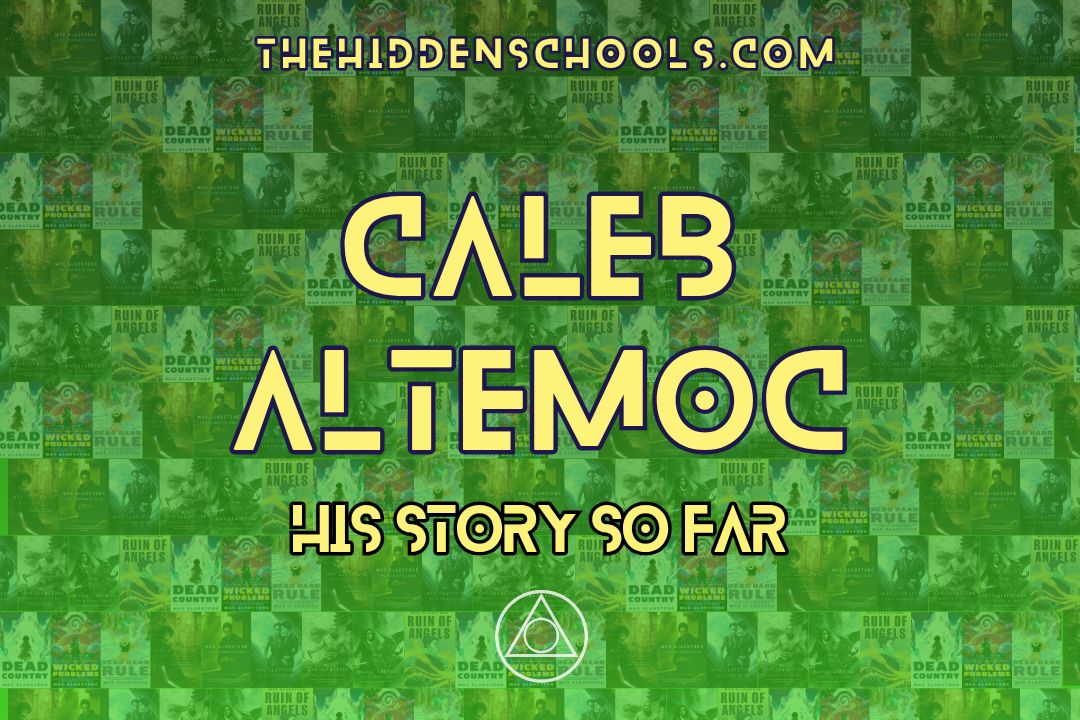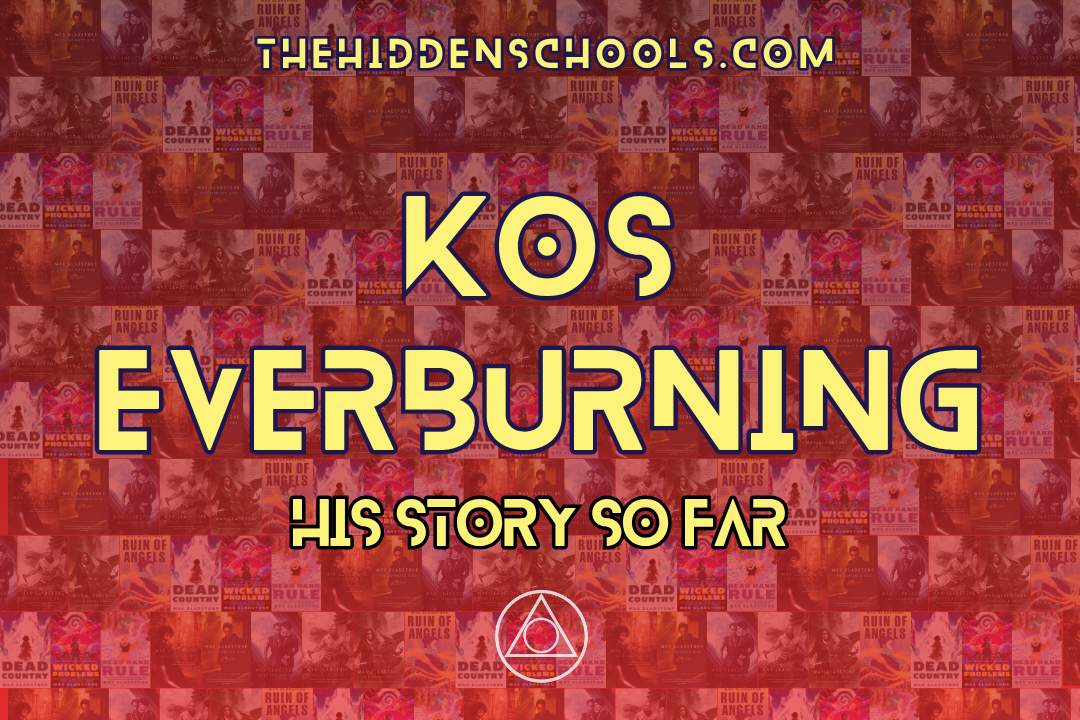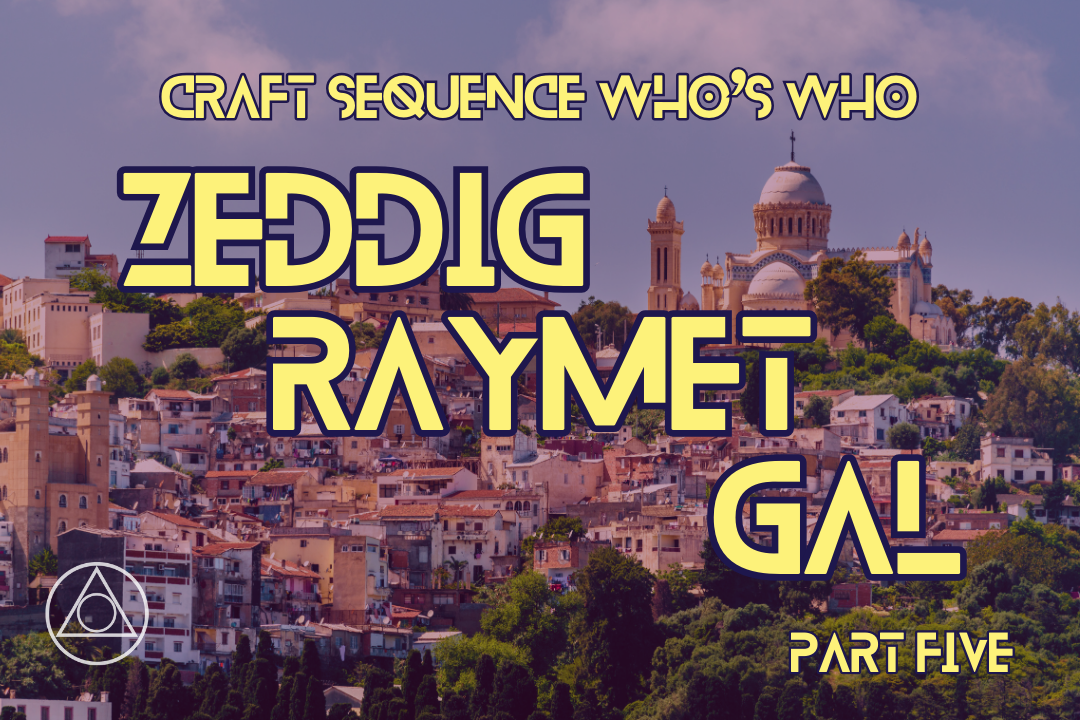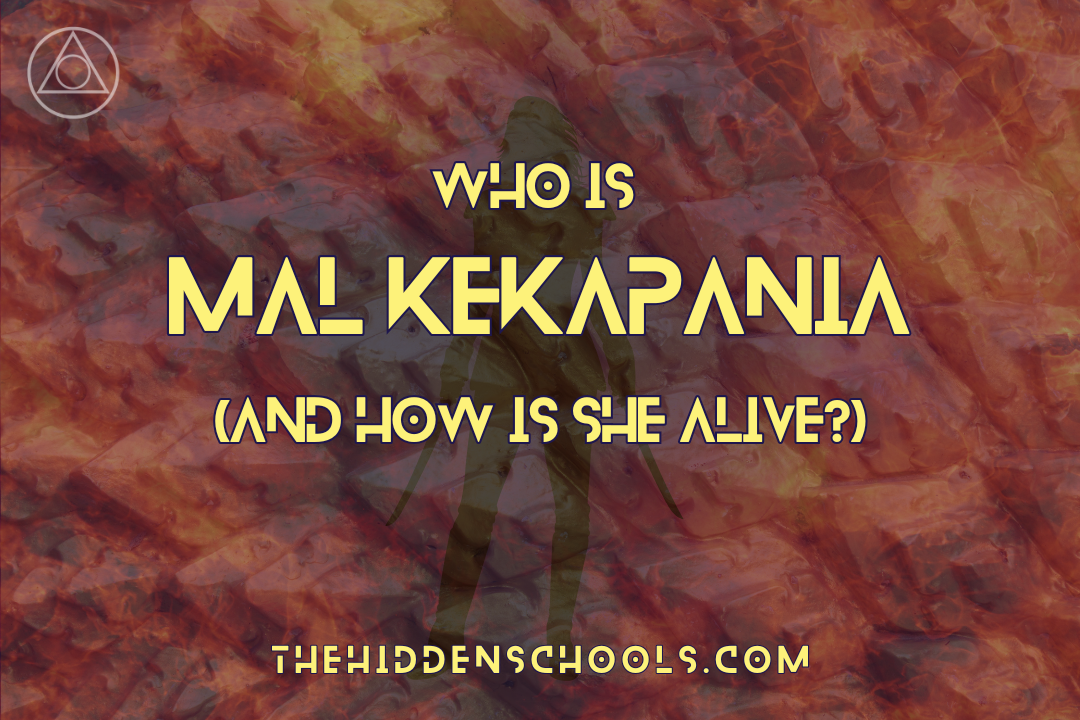The King in Red’s Story So Far
Some of this is adapted from other essays, some is brand new. Enjoy!
The Deathless King of Dresediel Lex is unforgettable. A red-robed skeleton, often accompanied by dramatic lighting, the King in Red fought viciously in the God Wars and rebuilt his city from the ashes in memory of his dead lover. Traumatised af, he has definitely not had enough therapy, and alienates his friends, relitigates the old wars, but ultimately is trying to become a good guy.
As we approach the publication of Dead Hand Rule, let’s take a look at The King in Red’s story so far.
The King in Red before the series
Let’s start with the King in Red before he was the King in Red. Back when the Deathless King of Dresediel Lex was simply a man, called Kopil.
We know little of his life prior to the Wars – not how he came into his powers, where he lived, anything about his family. All we know is that he loved a man called Timas, who was sacrificed to the Quechal gods by the Eagle Knights. We hear about ‘temple slaves’, but it isn’t clear whether sacrifices came from that group or another; I’ve tended to imagine Timas and Kopil were in some form of indenture or slavery, but we haven’t seen enough of the pre-Liberation Dresediel Lex to know one way or another. Surname prefixes in Quechal tell you the clan a person comes from - Caleb is Altemoc from House Alh, Mal is Kekapania from House Kei - and their historic role in society. We don’t know the surname of either Kopil or Temoc.
Losing Timas lit a fire under Kopil that has never quite gone out.
“I know what it’s like to be on no one’s side but your own.”
The King in Red had lifted the picture in the silver frame. Kopil opened his palm as if setting a bird free. The picture slid through the air. Caleb caught it, and looked for the first time at the image: an old-fashioned sepia miniature. Two men embraced at the foot of a black pyramid. They were young and smiling and obviously in love, both dark as magisterium wood, one shorter than Caleb, the other tall for a Quechal man, and thin, with narrow sloping shoulders.
“Eighty years,” Caleb guessed.
“More than that.”
“What was his name?”
“Timas.”
“I’m sorry.”
“They took him for the sacrifice to the Hungry Serpents.” Kopil tapped the surface of the altar. “He’s still here. A piece of him, at least. Two or three drops.”
“Why are you telling me this?”
“We all think we’re on our own side, until the time comes to declare war.”
To me, that last line says that Kopil wasn’t particularly interested in taking sides in the early gods v Craftsfolk battles. We know he is extremely talented in Craft, so it makes sense to me that he would have noticed his ability young, as most Craftsfolk do, but he doesn’t seem to have been driven to hone his skills and run off to a university, flying or otherwise.
It sounds like he and Timas saw themselves as separate from the Wars and the existential battles being fought across the World Sea. They were together.
And then they were ripped apart. The priests who sacrificed Timas unknowingly signed their own death warrants by making an enemy of Kopil.
We don’t know exactly what happened next. Did Kopil’s devastation burst out of him in destructive Craft, as we saw with Dawn in Dead Country? Did he keep it quiet, run away to apprentice to a master of the Craft? Did he find a precursor to the Hidden Schools? Did he go straight to wherever the front lines of the God Wars were at that point, or bring the Wars to his city? We know he “lost whatever shreds of mercy he once had on the battlefields of Central Kath” (The City’s Thirst) and took on the name the King in Red, a war name.
“Back in the God Wars you and the other Craftsmen gave one another names—when dreams of victory soured to sick jokes, when the fight was all that drove you on, when the things you’d done, and the things done to you, broke you so much your old names no longer fit. War names were guards against horror; war names were masks you wore to pretend the atrocities you suffered and inflicted did not touch the meat beneath.”
Interesting, isn’t it, that Kopil never dropped his war name in peace time? As CEO, as essentially mayor of Dresediel Lex, as administrator over a city of millions, he is known almost exclusively by his war name. The King in Red.
Whatever he did immediately after Timas’ death, we know he was in Dresediel Lex for the peace talks that failed, in 1440. Elayne Kevarian recounts that she was 17 at the fall of Dresediel Lex, and Kopil was 40. Hatred and vengeance had settled into his bones by that point, and he gleefully took to the skies to smite the last of the Eagle Knights. And then he set about rebuilding his city. As Elayne says, “You broke their world and built a better one in its place” (Last First Snow).
Between 1440 and 1483 (the time of the Skittersill Rising and Last First Snow) Kopil became a master of Craft, and cemented his hold over Dresediel Lex. When we meet him in the books, he is all but the overlord monarch of the city, king in name and position. But he didn’t start that way. Rebuilding Dresediel Lex required alliances and loans of soulstuff, and there were competitors to Red King Consolidated all around. It took several decades for the King in Red to, well, consolidate everything into the mass of power we see in the books.
And he was still going off to war. The official timeline tells us Seril was slain in 1459, and we know Kopil killed her (or thought he did). Then he mortgaged spoils of war looted from her corpse to help build RKC.
For those who haven’t played the games, know that we see the King in Red in the flesh (literally) in Deathless: The City’s Thirst. It’s a more complicated game than Choice of the Deathless, so I haven’t managed to do a proper walkthrough, but it’s well worth playing. The character you play meets the King in Red, and we get new insight into pre-skeleton Kopil.
“The King in Red descends from the train. Kopil is—there aren’t words for what he is. In form and figure he’s a Quechal man, enormously tall, bald, dark, crimson-robed, with long limbs and an actuary’s grace, as if expecting he’ll one day be called to account for his every movement. As if the world rests on his shoulders, and he’s strong enough to stand anyway.
He presses against the eye. It hurts to look at him, like it hurts to look at the son. He descends from train to sand. His footsteps are the unravelling of time.
…
A thousand candles light the King in Red’s chamber. Clad in a crimson bathrobe he reclines upon empty air, reading the late edition of the Times, which you sincerely doubt delivers to unnamed tunnels deep in Scorpionkind territory. A contrabass choir chants Zurish deathsong. He folds the newspaper down. His face is covered in a mud mask, and his pupils glitter red.
“Come in,” he says, and stands. The newspaper floats to his end table. The mask cracks and peels itself away, taking a layer of skin with it. The revealed face is fresh as a new-shed snake. “I don’t mind casual visitors, but it seems you have business on your mind. Go ahead. Don’t stand on ceremony.”
…
The King in Red lost whatever shreds of mercy he once had on the battlefields of Central Kath. He wants what’s best for Dresediel Lex, pure and simple—and if he has to trample everyone who stands between him and a prosperous future for the city, so be it.”
Someone as powerful as Kopil could have gone anywhere, but he stayed in Dresediel Lex. Part of that was surely as a fuck you to the gods, but for me I see part of it as being for Timas. A small part of Timas remains in DL, and all of Kopil’s memories of his lover. How could he leave?
He left his body behind and went full skeleton at around 60 years old.
“I was a mess, after the Wars. Twenty-two hour days. We rebuilt this city with our bare hands, mortgaged our souls a hundred times over, a thousand, to pull Dresediel Lex out of the shadows. My life was work. By sixty I carried a lot of extra weight and a vicious temper. I hadn’t slept eight unbroken hours in a decade. So when the doctor told me what was growing in my lung I wasted a week on self-pity, then said what the hells, let’s get this over with. I wasn’t using the body for anything important.”
Other than a reference to Elayne working in the Dresediel Lex office of Kelethres, Albrecht, and Ao, we don’t get much information about the ensuing years.
And then we reach the books proper.
Last First Snow
Forty years after Liberation, the King in Red has hired Elayne Kevarian to negotiate land rights in the Skittersill. Everything is going to plan, until the judge reveals to Elayne that there are protestors, led by Kopil’s old enemy and last Eagle Knight, Temoc Almotil. Kopil kept the details from her on purpose, and she’s pissed off.
She manages to get everyone around the negotiating table, despite their dark and bloody histories together. Kopil can’t help Kopiling all over the place and risking the settlement, but ultimately it all seems to work out. The King in Red, Tan Batac and his investors, and the Skittersill protestors come to an agreement and meet in Chakal Square to sign a treaty-
-and a riot breaks out. Tan Batac is shot, and the faceless police force retaliates against the crowd. A child is killed, and the King in Red refuses to hand over the Warden who shot him. The peaceful protest becomes a violent uprising, and the King in Red is more than happy to fight back. Every person in that square is a combatant, he declares, and he convenes a War Council. Unnatural beasts of Craft are set against leaders of the Uprising when they leave the Square to convince Temoc to return and lead them. Elayne is horrified at Kopil’s actions and his glee at being let loose.
“So why,” he said, “should I not open the ground beneath them now? Why not rain fire from the heavens? Why not descend into their midst, shadow-winged with a fiery sword, and walk from tent to tent singing slaying songs? I could ash the rock upon which they stand, dry the fountain from which they drink. I could fill the streets with poison gas and rend their dreams to shreds. Fear would stitch Dresediel Lex together again.”
“And you would have the blood of thousands on your hands.”
“That blood’s already there. I’d add a fresh coat to what’s left over from the Wars.”
“Do you think our colleagues will look kindly on a mass murderer?”
“What is war but mass murder? And they called me a hero for that.”
“There are other ways to rule.”
“Name one that works.”
The King in Red never really came out of the God Wars. He’s been fighting them in his mind ever since Timas died, and now he has the perfect target in Temoc. It goes from bad to worse when rebel leader The Major asks Temoc to sacrifice him to the gods rather than let him die naturally from his wounds. Temoc agrees, breaking the last possibility of peace - the King in Red will destroy the Square and the Skittersill Uprising the next day using God Wars weapons.
There is a last chance for people to flee, but many stay. Kopil makes Elayne promise with her Craft not to intervene to protect people of the Skittersill. She does get him to ensure some level of protection for the Skittersill’s building by enforcing the yet-to-be-signed insurance contract, but that’s as far as he goes.
Gripfire falls from the sky. The King in Red rides the corpse of a dragon into battle. The few remaining gods rise up and make some of the dead into weapons, but they can’t fight against the might of the King in Red. The Skittersill Uprising is brutally quashed.
Elayne finds a loophole to save a few people, but not enough. Kopil is furious anyway.
The book ends with the King in Red maintaining control over his city, but having lost one of the old friends he still had. He is more alone than ever, mired in his unresolved trauma and pain.
Two Serpents Rise
Seventeen years after the Skittersill Uprising, Temoc’s son Caleb is now working for Red King Consolidated. Honestly, I’m amazed Kopil agreed to hire him. I can only assume he’d rather have Caleb close to hand than off somewhere else doing gods know what.
RKC is on the brink of a major merger with Heartstone, a company led by an old enemy of the King in Red. They have direct access to the Twin Serpents, and Kopil wants them. The Serpents are ancient, giant creatures that were part of the old Quechal religion - not quite gods, but given the hearts of sacrifice victims to keep them sated and asleep. They slumber beneath the ground in uneasy sleep.
Shortly before the merger, someone is poisoning Dresediel Lex’s water with demon-like creatures, and Caleb is responsible for solving the problem. Heartstone has a new condition for the merger: RKC will keep the Serpents asleep above all other priorities, even Kopil’s own life. RKC agrees.
If this sounds like an Big Evil Plan to take down Kopil then…you’re absolutely right, but we don’t technically find that out until the end.
The merger goes ahead. Heartstone’s head Craftswoman turns out to be Caleb’s situationship. When former-Heartstone reservoir is attacked, the King in Red sends both Caleb and Mal to fix it. Unknowingly, Caleb helps tie the reservoir directly to the Serpents - if there’s another water poisoning it’ll affect them and, under the final contract, the King in Red must do anything in his power to keep them asleep. He is weakened massively by this current attack.
“A hospital bed rested near the altar-desk. The carpet was rolled back, and someone had drawn a mandala around the bed with white and purple and yellow sand. Red sheets clad the mattress, and a red robe wrapped the skeleton who lay upon it.
The shadows that clung to Kopil looked light and insubstantial. His gestures were weak, the sparks of his eyes dull and rust-colored. The Kopil who confronted Caleb in this office months before had been a river in flood, and here he lay at ebb.
Caleb stared. Everything he could say seemed wrong.
The King in Red beckoned Caleb with a twitch of his fingers. He approached.
Bare jaws worked silently until the Deathless King could speak. “What happened?”
“You look different,” he said, and wished he had said something else.
“I am different,” Kopil replied with a low, grating laugh like a snake’s rattle. “I lie reduced, and the water flows. It has been half a century since I last felt weakness. Do they appreciate what I do for them, I wonder.”
As an eclipse approaches, across the city madness takes flight. Nightmares infest the city, dreams of Aquel and Achal, snakes of flame, the end of the world. On the day of the eclipse itself, Caleb decides to show Mal an RKC secret about how the city functions: the corpse of the old Quechal god Qet Sea-Lord, his heart desalinating sea water in a Craft bastardisation of his old godly powers to bring the rains.
In a totally unforeseeable turn of events, Mal betrays Caleb’s trust in the middle of the night, steals Qet’s heart and breaks the city. RKC pulls on Seven Leaf Lake, now teeming with demons, and accidentally starts waking the Serpents. Kopil works out roughly what’s going on and tries to tear up the contract, but falls unconscious before he can do so.
The King in Red is, therefore, unconscious for most of the climax of the book. Luckily for him, Caleb and his friend Teo manage to foil Mal’s plan, tear up the contract, and awaken Kopil. As Caleb goes to fight Mal, the King in Red fights Temoc (yet again).
Caleb has learned through this book that he is able channel soulstuff in a different way than priests or Craftsmen. He convinces Kopil to give him an obscene amount of soulstuff (money) to funnel to the Serpents, which breaks Mal’s control and sends them back to the depths.
Several weeks later, semi-recovered, Caleb pitches a new venture to the King in Red and Teo: a new organisation, a sort of non-profit, to fix God Wars damage and act as a conduit between the Craft and religion, using Caleb’s scars. Kopil agrees - and I like to think it’s partly because of Elayne’s reaction to the Skittersill Rising.
The next time we see Kopil is because of this new organisation, the Two Serpents Group. In Four Roads Cross, Tara Abernathy is seeking a remnant of Seril Undying, the goddess thought to have been slain by the King in Red. Turned out she survived, and now Tara is trying to build back her power base.
With an introduction from Elayne Kevarian, Tara gets a brief meeting with the King in Red. He is Extremely Kopil about everything, and I must give you this wonderful description:
“The King in Red lay in swim trunks on a lounge chair, his pale anklebones crossed atop bamboo slats. The red gold crown set into his skull glinted dull and bloody in the sun.
His ribs jutted from the chair like tree trunks a fire had stripped of bark and left to die.
One skeletal hand held a round glass three-quarters full (or one-quarter empty) of a weapons-grade pink cocktail shaded by four paper umbrellas and sporting a spear of tiny melon cubes interspaced with jadeite giraffes. Ice shifted in the glass.
He wore sunglasses, which made no sense. Golden tabs affixed the glasses to the holes where his ears would have been.”
Turns out he gave away the part of Seril he held to the Two Serpents Group as start-up costs. Tara stops Shale from trying to murder Kopil (who is impressed, tbh), and then goes off to meet Caleb Altemoc.
That’s the last we see of the King in Red until Wicked Problems - though it turns out Tara Abernathy has been writing to him, which I love.
Wicked Problems
The plot of Wicked Problems has our characters converging on Dresediel Lex, which means a King in Red appearance is inevitable.
Caleb and Abelard are hanging out at Caleb’s mom’s house when Wardens arrive to arrest them and take them to the King in Red. Caleb snarks while Abelard cowers, and Kopil puts them under 24 hour arrest to keep them out of the picture while he goes to stop Temoc, Dawn, and the Arsenals - who have gone to wake the Serpents.
Caleb and Abelard manage to blast out of their prison, go to Teo Batan’s place to borrow her car (she insists on driving), and join the fray.
We get some crucial info from the King in Red during the fight. He already knew the skazzerai were coming - he is the one who has funded the Tlaloc Observatory for years. He has been keeping tabs on the systems of Craft, knowing that a being like Dawn/Sybil would arise. And he is the one to tell us that Dawn is a skazzerai.
In this battle, Kopil is verging on REASONABLE. It’s quite something to see. He’s trying to talk to Temoc and Mal, holding back the full might of his power to allow them to banter and hear from them. He calls Mal a C-student excuse of a revolutionary, which I enjoyed very much. He admits he made a mistake in the Skittersill Rising.
The King in Red admits he made a mistake. Let that sink in.
Everyone’s favourite semi-immortal war criminal is having CHARACTER GROWTH.
Dawn rises with new godly powers, and whisks her followers away. Kopil, however, is not willing to let Mal escape, trapping her in a demonglass marble.
And then, they have to turn to saving Dresediel Lex. It’s a drought, after all, in a desert city, and godfire from the Serpents rages. The fire eats through Elayne’s wards in seconds. Ultimately, DL is saved by Abelard, but I wanted to end this essay about Kopil with Elayne’s description of him as he works to save his city:
“The King in Red talked such a stage-show-wizard game that it was easy to forget how good he was. When they were younger and still on speaking terms, she’d asked about that, and he explained: it was a persona. Brand and flourish. If an enemy thought they knew you but in fact knew only your persona, then it was your persona they would fight—which gave you room to maneuver and outflank. But a persona was just a kind of mask, and magic masks, once put on, were troublesome to remove.
Still, he was a spectacular Craftsman. A bit used to dealing from a position of overwhelming force, but stunning in argument, incisive and rare.”
What a fantastic insight, to remind us that beneath his bombast and drama queen tendencies, Kopil is in his position for a reason. He’s really, exceptionally good at what he does. That’s how he rebuilt Dresediel Lex after Wars, how he was able to turn his grief at the loss of Timas into first defeating the gods who killed him and then building a shiny city on their ashes.
And that is The King in Red’s story so far.
What do you think? Let me know - and don’t forget you can subscribe to be the first to hear about new articles and fun projects in the pipeline. Like what we do here? Tips welcome on ko-fi to help pay for the site!






























